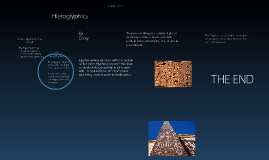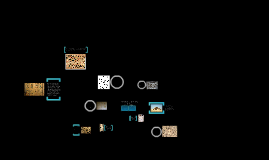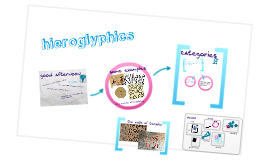Hieroglyphics
Transcript: Hieroglyphics Hieroglyphics were used not only for economic reasons like cuneiform. Early Egyptian hieroglyphs were created for economic trade recording, calendrics, politcal and environmental recording and largely for religous intentions. The ancient Egyptian language,Hieroglyphics, changed the means by which we communicate. It introduced the visual aspect of language. Since hieroglyphics were very time consuming to create, the Egyptians developed a simpler, cursive language called hieratic. The First Written Language Hierogylphics consisted of pictograms and ideograms that depicted events, ideas, and feelings of life. This novel discovery Changed language from just sounds to now include shapes. Cuneiform is commonly considered as the first written language, but because of it's abstract and underdeveloped structure it shouldn't be. Megan Robinson Soham Bose Amy Stewart Tyler Walker Hayley Drosky The Egyptian Hieroglyphics were much more developed than the Wedge-Shaped script, cuneiform. The Semantic workers in Egypt created the first alphabet, made up of 22 Hieroglphs, to communicate economically. The Egyptians considered their "sacred writings" to be a gift from the gods. This gift of language was in the form of pictures and images. Hieroglyphics were created and used in early 3000BC by the upper-class, royalty and priests. They told stories and recorded the rich history of ancient Egypt. Hieroglyphics set the basis for a numerous oral languages, including Greco-Roman, Arabic, Hebrew, and a various amount of other eastern African languages. Egyptian Hieroglphics should be considered the first wriiten language because of it's diverse use, development of the first alphabet, creation of a usable system, and effect on the spread of written languages. English 1102 Georgia Tech February 16, 2011

















